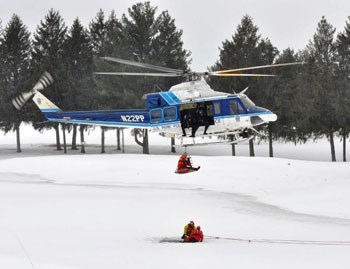
USPP PIO
Aviation Unit
The Aviation Unit of the United States Park Police began in April 1973 and was placed under the command of Lt. Richard T. Chittick. It started with 1 Bell 206B JetRanger and a staff of 3 Pilots and 3 Rescue Technicians based at the Anacostia Naval Air Station in a shared space with the MPD Aviation Branch. A second helicopter, a Bell 206B-3 JetRanger, was added in 1975 and the Unit relocated to Andrews AFB.
The Aviation Unit moved to its present facility in Anacostia Park, the "Eagle's Nest," in 1976. In 1983, the 206B-3 was upgraded to a Bell 206L-3 LongRanger. Their first twin-engine helicopter, a Bell 412SP, and the third helicopter to carry the designation "Eagle One," was placed in service in January 1991. The Unit grew to its current staff and began providing 24-hour coverage in January 1994.
In August 1999, the Unit took delivery of its second twin-engine helicopter, a Bell 412EP. It became the fourth helicopter in the Unit's history to carry the designation "Eagle One" and the same registration number as that of an earlier aircraft whose crew effected the rescue of victims after the crash of Air Florida, Flight 90.
The missions of the United States Park Police Aviation Unit include aviation support for law enforcement, medevac, search and rescue, high-risk prisoner transport, and Presidential and dignitary security. The Aviation Unit has provided accident-free, professional aviation services for over 28 years. This is due to the dedication of the flight crews, the support from within and outside the Force, and the state-of-art equipment used in the performance of its missions.
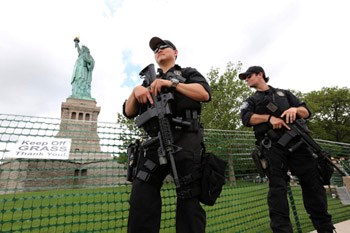
SWAT conducts basic SWAT schools, which are routinely attended by officers from outside departments. The physically and mentally challenging course is designed to take police officers and train them to handle high-risk situations working in a team environment.
The SWAT Unit has a proud history and a challenging future. Although there are time-tested tactics that remain the same, new tactical methods and technology continue to evolve that have improved SWAT operations. The SWAT Unit will continue to push towards the cutting edge and break ground for new innovative ways to safely and effectively protect the visitors to our National Icons.
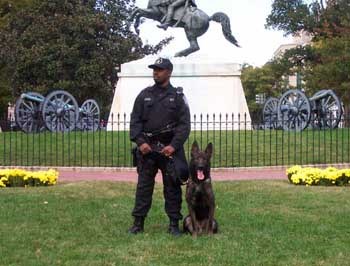
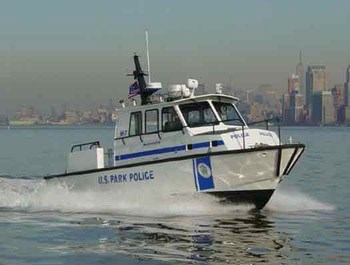
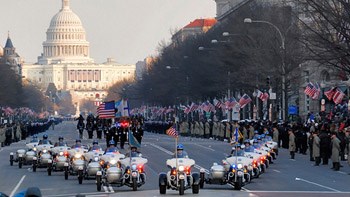
The Motorcycle Unit was established in the early 1920's with 9 motorcycles and provided mostly local traffic control. As the responsibilities of the Force expanded, so did the role of the Unit. It continued to grow and, by 1947, had 29 motorcycles.
The Motorcycle Unit provides escorts for the President of the United States, all foreign Heads of State, and other dignitaries. It plays a major role in traffic changes and daily enforcement. The Unit members play a key role in all large-scale public events. The Motorcycle Unit has been proudly displayed in major parades in Washington, DC, for over 5 decades. The Motorcycle Unit also provides training to many police departments throughout the United States. In 1996, 3 members of the Motorcycle Unit traveled to Jordan, at the request of the King, to train the Royal Family and members of the Royal Guard. Motorcycle Unit members have competed in many national police motorcycle competitions and have received high recognition for their riding abilities. Members proudly participate with the Make-A-Wish Foundation in helping critically ill children visit Washington, DC.
Today, the Force has assigned motorcycle officers in the Washington metropolitan area and several in the San Francisco Field Office, operating a fleet of Harley Davidson Motorcycles. This Unit has a proud history of over 90 years of police motorcycle service.
Last updated: February 4, 2015
